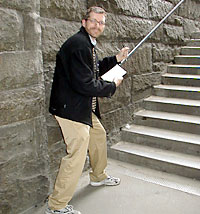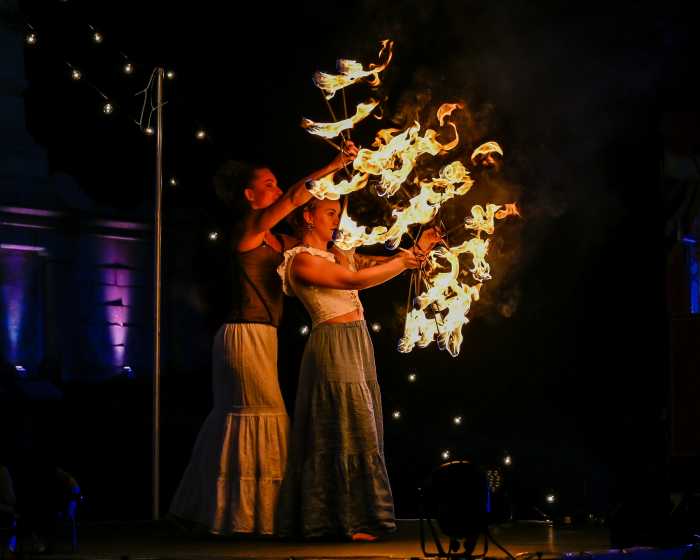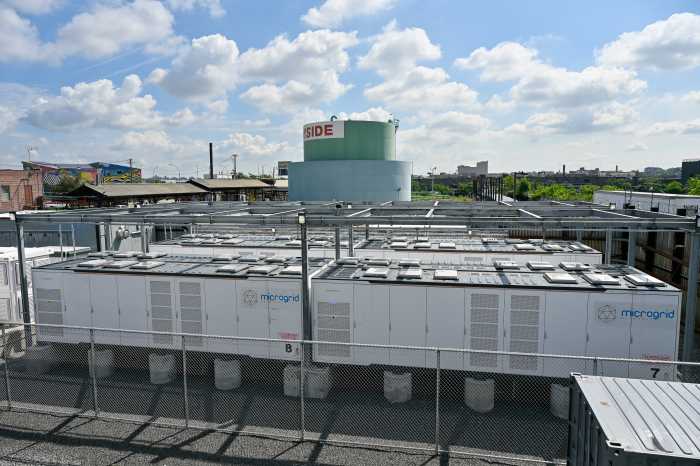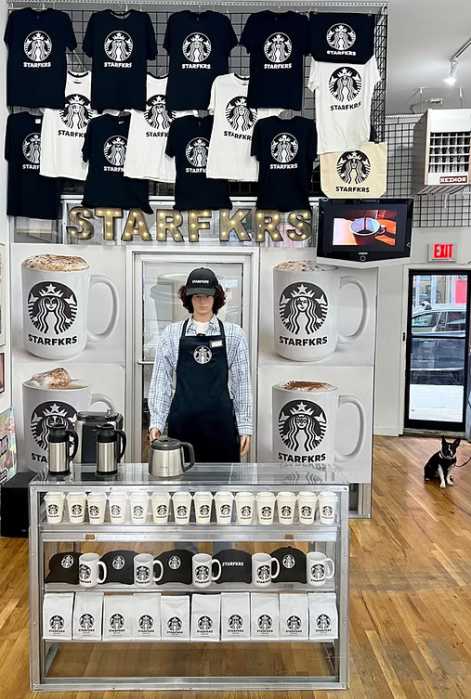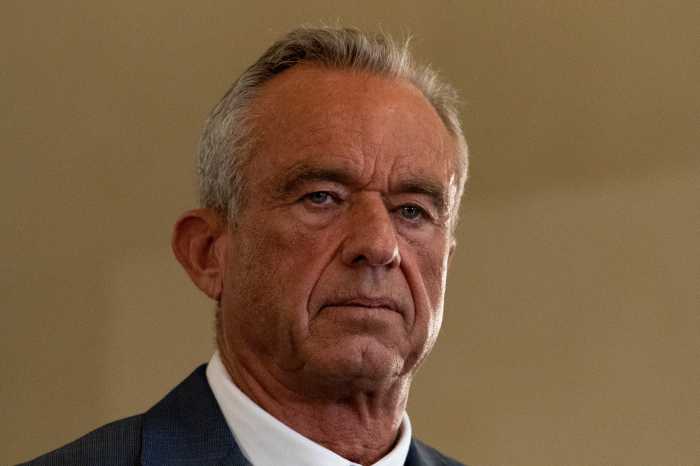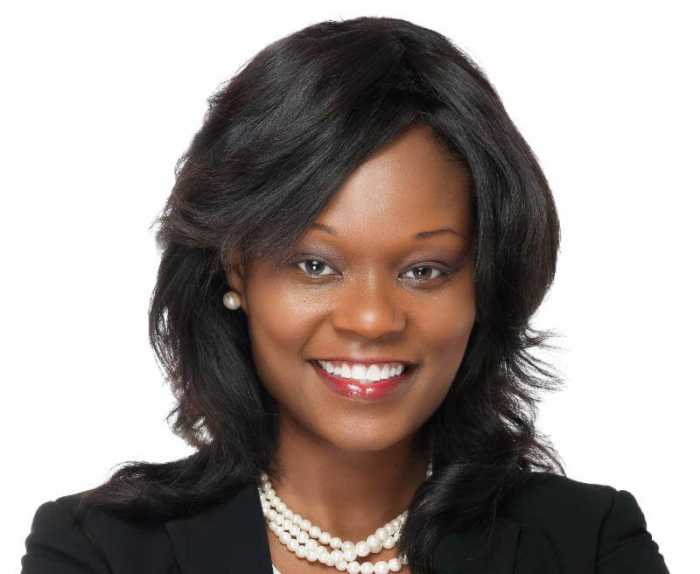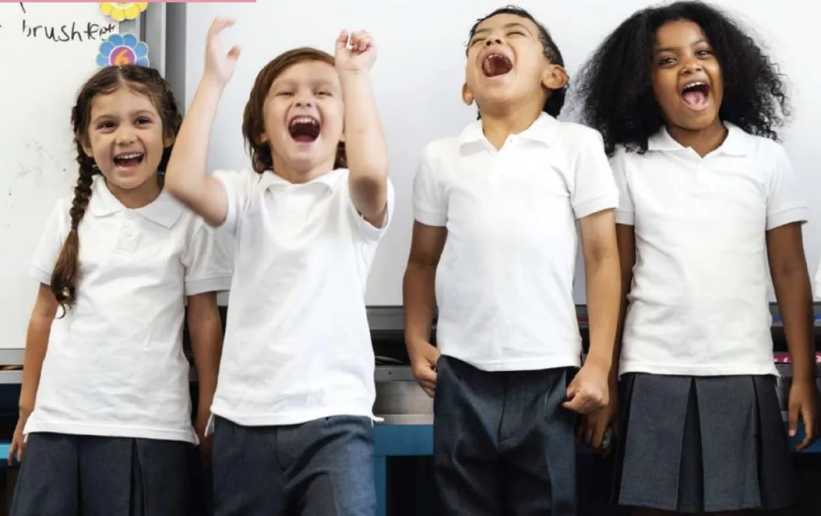The following column was written on Sept. 11, 2001, in the middle of the terror attacks on New York. We are reprinting to recall the day as it unfolded.
We hated those damn towers.
They were boxy, kind of ugly, and out of scale even within Lower Manhattan’s riot of skyscrapers.
Yet in Brooklyn, we who lived in the shadow of Manhattan’s greatest symbol are even now unable to accept that our skyline and our city will never be the same.
On television, the talking heads are saying that the terrorists who masterminded the attack wanted to “strike at the symbols of American power,” but when you live in Brooklyn, the Twin Towers of the World Trade Center are not symbols. They are omnipresent facts, visible from everywhere, as unavoidable as germs in a daycare center or a speck of dandruff on a just-cleaned interview suit.
George Willig, who climbed one of the towers in 1977 as a stunt before such things were actually popular, once told me that the reason he did it was because the buildings were so ugly that they taunted him.
Visitors from out of town would look out the window of my Park Slope apartment — which has (make that “had”) an enviable view of the World Trade Center — and be in awe.
“Wow, what a view,” they would inevitably always say, “except for those towers.”
And when they wanted to get a panoramic view, we’d always send them to the Observation Deck at 2 World Trade Center rather than the Empire State Building — the logic being that if you were standing on top of the World Trade Center, the World Trade Center wasn’t ruining the view.
Yet when I looked out my window on Tuesday morning and saw them engulfed in flames, the sight was simply the most terrifying thing imaginable. And then they collapsed. Suddenly, I didn’t feel terrified anymore. After all, the very thing that New Yorkers have feared since the Trade Center bombing in 1993 had just happened. The buildings had, indeed, collapsed. So feeling terrified quickly gave way to feeling humbled — like the schoolyard bully had picked a fight with us, but this time the bully actually won.
My friend David Shenk stood on top of his Park Slope building when the towers were still in flames and described the feeling of having his jaw scraping the tar paper.
“When you live in Brooklyn, the towers are so far away the sight of them burning was unreal, but a manageable sort of unreal,” he said. “I mean, when you go into Manhattan and actually stand next to those towers, well, each one of them is like a fortified city! It was simply inconceivable that they would collapse. All I could do was say, ‘Oh my God,’ over and over and over.”
I headed for Carroll Gardens. The Twin Towers hold an especially powerful sway over this corner of Brooklyn, just a mile across the river from Lower Manhattan.
When I got there, the Towers were still on fire, but structurally intact. Resident after resident told me that they were only nervous because their son, daughter, husband or wife hadn’t yet come home from “the city.”
And then the buildings collapsed. We didn’t hear it, but knew it because suddenly the debris changed. The neighborhood was quickly engulfed in ash. A local paint store started selling — not giving out, but selling — ventilation masks, cheap models for 27 cents all the way up to a deluxe version for $2.37. Teachers and parents from local schools swarmed into the store to get the masks for the kids, who were being kept in classes rather than dismissed to go home to an empty house.
“Every kid in this neighborhood is going to be traumatized,” Neal Weinstock, a parent at a local school told me as he bought two boxes of masks. “At the school, the teachers pulled down the shades when the buildings were hit. The kids were scared. Those buildings are like their friends.”
Outside the store, people were gathering on stoops with transistor radios, just as if they were listening to a news story from the 1960s or a daylight World Series game from the old days. It was clearly a disaster in another way: New Yorkers were actually talking to each other on the street, something that only happens in this deeply impersonal city during really big snowstorms or situations like, well, like the 1993 World Trade Center attack.
I started walking towards the Brooklyn Bridge — possibly New York’s most identifiable symbol, albeit not strategic from a terrorist’s standpoint. People were pouring off the bridge, heading home or just fleeing Manhattan. New York is that kind of city; when terror strikes, you just start walking. Subways, which are as constant in our lives as running water, suddenly become potential deathtraps, places filled with black smoke and burning plastic.
I looked up at the famous bridge, and the Manhattan Bridge just to its north. Both were flattening from the stress of the tens of thousands of people making their way across. Many people, accustomed to riding in that fabled “hole in the ground” under this part of Brooklyn, didn’t know where they were once they got to the other side of the bridges. Or maybe they just COULDN’T understand.
“Could you just tell me where I can get a taxi, son,” 71-year-old Ben Sohn, a clerical worker for the Sheriff’s Department, asked me as he came off the Brooklyn Bridge walkway.
Sohn was covered in soot from the explosions and needed help standing. He offered all the outward signs of shellshock, unable to comprehend what had happened two blocks from his office, before his body had somehow made the 45-minute walk across the bridge. I got him some water and made him promise that he would sit in the shade and drink for a half-hour before trying to get home to Midwood — which was inaccessible for several hours anyway.
Nearby, a man was walking with his two kids, their fluorescent school backpacks slung around his neck. He told me he lived a few blocks from the Twin Towers and that he’d jumped on the first subway he could — it hadn’t been shut down yet — so he could get to his daughters, who go to school in Brooklyn. The subway let him off at the Manhattan side of the Brooklyn Bridge, so he jogged across. Now he was walking his daughters back across the great bridge.
“I know 40 people who work in that building on the 106th floor,” he said. “I mean, I used to. They’re just not there anymore.”
“Daddy,” said one of his daughters. “Mommy works in the World Trade Center.”
He had no answer for his daughter, but looked at me and said, “Please say a prayer.”


